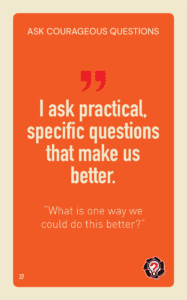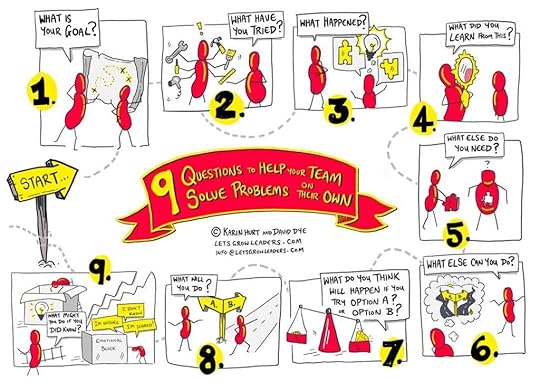Intimidating Questions: How Bad Questions Shut People Down
 Avoid These Intimidating Questions That Can Silence Innovation and Problem Solving
Avoid These Intimidating Questions That Can Silence Innovation and Problem SolvingWhen someone on your team screws up or has one of those “what were they thinking” moments, particularly when the stakes are high. You need to figure out what’s going on– fast. In these moments of stress, it’s tempting to shortcut communication with blunt, intimidating questions to get quick answers.
But here’s the challenge: asking intimidating questions can stifle creativity and problem-solving, leaving your people hesitant to share information, let alone ideas to fix the situation.
Intimidating Questions That Disengage EmployeesThe most dangerous and intimidating questions are those where the asker already “knows” the answer, and just wants the receiver to “get it right.” Closed-ended questions can have a similar impact. It can come across as passive-aggressive to pretend you’re curious when your intent is for your direct report to admit a mistake or agree with you.
Here are a few classic intimidating questions.
What do I have to do to get you to…?Why did you do that?Did I ask you to do that?Is that really working?What is your experience in this area?Who gave you the authority to make that decision?Is that your final decision?Are you sure about that?What makes you think that will work?The Impact of Intimidating QuestionsThink about it—when was the last time you felt energized and motivated after someone asked you, “Why did you do that?” The same is true for your team. They feel criticized rather than supported, and this defensiveness leads to less creativity and more playing it safe. Which is the last thing you need when dealing with complex challenges.
Instead of defaulting to intimidating questions that unintentionally shut a team member down, pause and reframe your approach with empathy.
A simple shift from, “Why did you do that?” to, “Can you walk me through your thought process?” changes the entire tone of the conversation. It signals that you’re genuinely interested in understanding their reasoning, rather than criticizing their actions.
The Power of Asking Better QuestionsSo, what do the right questions look like? They’re questions that help your team think critically, encourage them to explore new ideas, and ultimately guide them toward ownership of the solution. When your team feels safe to share their thoughts, they’re more likely to engage deeply with the problem and come up with innovative solutions.
Here are a few empowering alternatives to common intimidating questions:
Instead of, “What makes you think that will work?” try, “What options have you explored, and what led you to this one?”
Or, Instead of, “Who gave you the authority?” try, “How did you decide this was the right approach?”
Why did you do that?” can become “What were the factors that influenced your decision?”
Or you can try our 9 What’s Coaching Method to help a team member think more critically and solve more problems on their own.
These questions foster a spirit of collaboration. They’re designed to help your team reflect on their thinking, giving them the space to explain their reasoning without feeling attacked. This shift from interrogation to exploration builds trust and encourages problem-solving.
Related Articles:
No More Vague Reports: How to Get Your Team to Give You More Useful Information.
Attention to Detail: How to Help Your Team Have Less “Oops” Moments
Psychological Safety: Why People Don’t Speak Up at Work
Other ways to build stronger, teams who ask better questions of one anotherOf course, your team will be stronger if everyone knows how to turn the intimidating questions into ones that come from a place of genuine curiosity. You can find a list of curiosity habits to make your team stronger.
We’d love to help you and your team accelerate performance, reduce stress, and work better together. Learn about our SynergyStack™ Team Development System and SynergySprint Team Retreats.
The post Intimidating Questions: How Bad Questions Shut People Down appeared first on Let's Grow Leaders.





